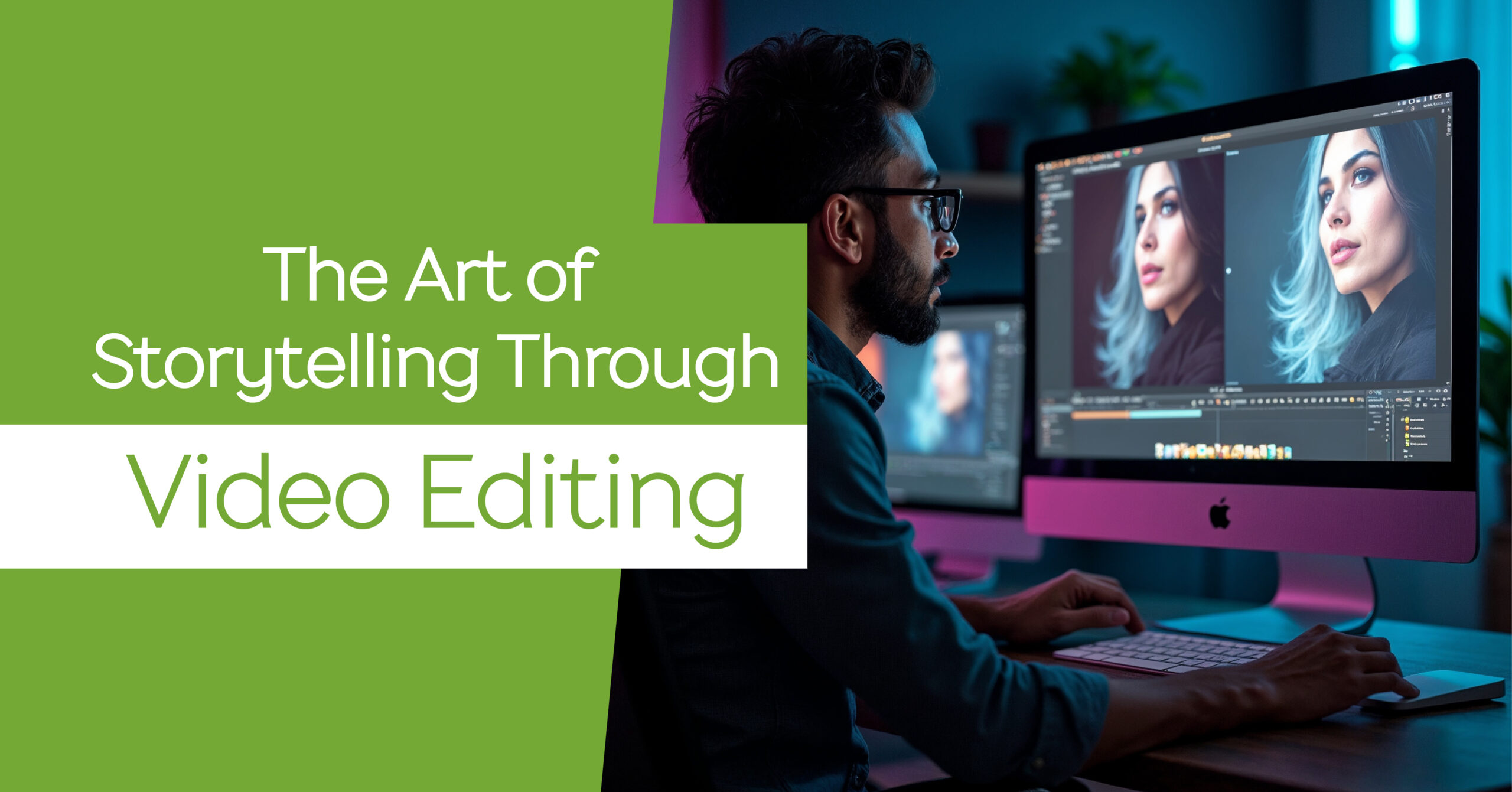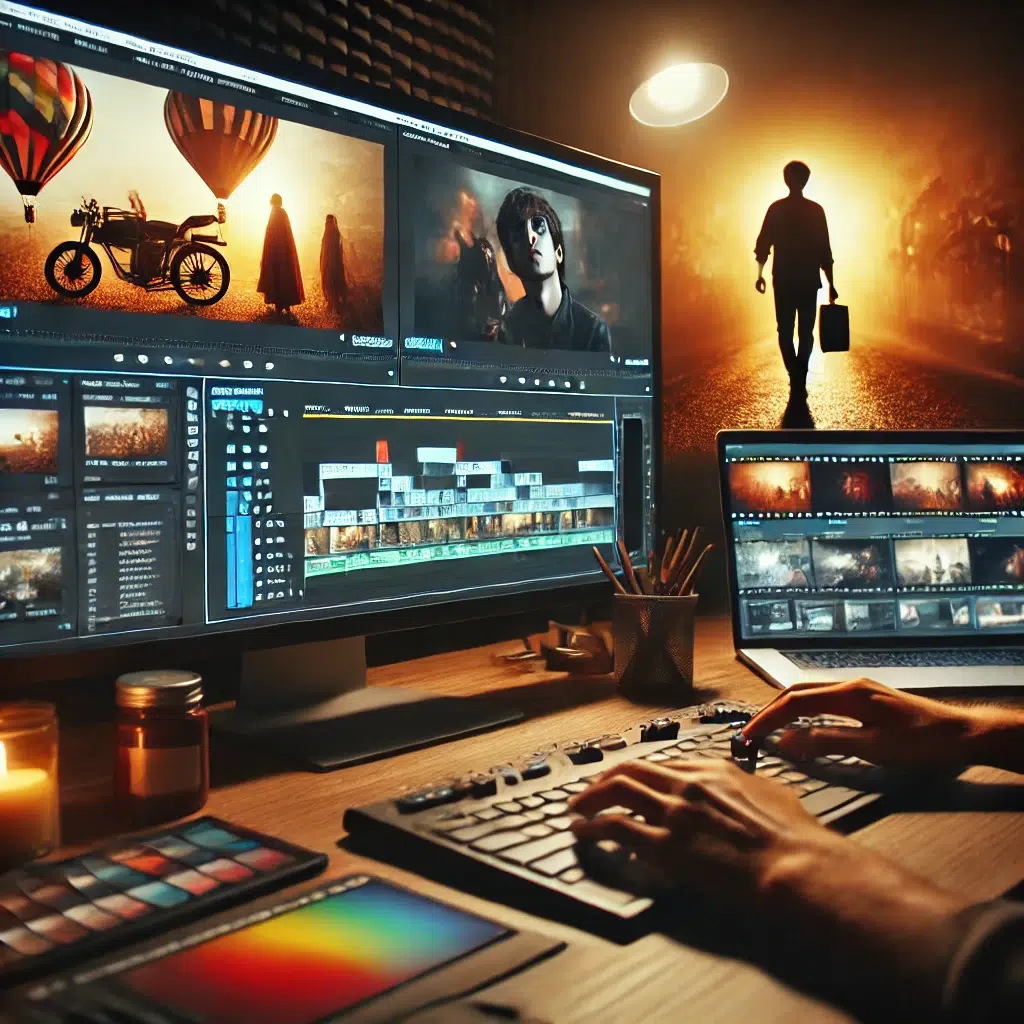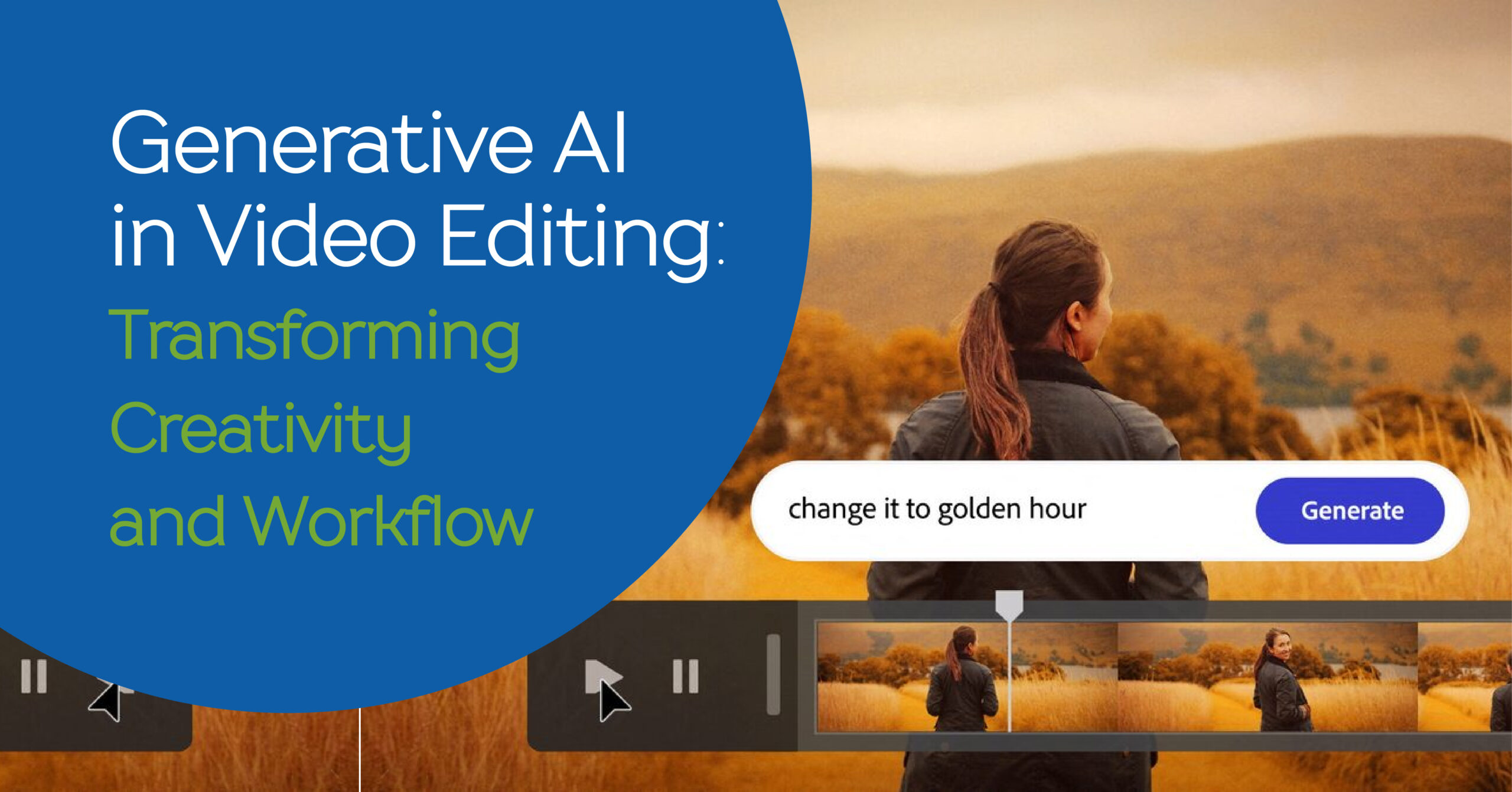
Crafting beautiful visual narratives with AI- Powered Tools
Storytelling has always been at the core of human connection. From ancient myths to
modern cinema, stories help shape how we understand the world. Today, video editing plays a crucial role in bringing these stories to life, turning raw footage into a narrative that resonates with audiences.
What sets great storytelling apart from good storytelling?
The art of editing. Let’s explore how video editing enhances storytelling and how AI-powered tools are revolutionizing the industry.
Every great story starts with a core message or emotion. Whether it’s hope, love, or triumph, identifying this core is essential to effective video editing. AI-powered tools in video editing can help you prioritize key moments, trim unnecessary footage and focus on what matters most.
How AI Helps: AI tools can analyse raw footage, identify critical moments and assemble clips to emphasize the central message. These tools ensure a smooth narrative flow by adjusting pacing and rhythm.

Crafting the Narrative Flow with a Video Editing Course
A well-structured video reflects the art of a good story—a beginning, middle and end. Taking a video editing course will teach you how to perfect this flow, ensuring your story captivates the audience from start to finish.
Techniques to Learn:
Set the Stage: Establish context early on with a captivating opening shot.
Build Tension: Gradually heighten drama with strategic pacing, cuts, and sound effects.
Deliver Resolution: Conclude with a satisfying payoff that ties the story together.
Learning to craft these narrative elements in a structured video editing course can elevate your creative skills and storytelling ability.
Using Visual Cues to Enhance Emotion
Visual elements are powerful storytelling tools. A single shot can evoke deep emotions when used in the right context. Understanding the impact of color grading, framing, and symbolism will help you convey emotions more effectively.
The Techniques:
- Use warm or cool tones to influence the emotional tone of your video.
- Close-ups for intimacy, wide shots for scale.
- Visual metaphors can reinforce the core message.
- By honing these techniques in a short-term creative course, you can achieve a polished look that conveys the intended emotion.
Mastering the Audio-Visual Connection
In video editing, sound is just as important as visuals. Music, sound effects, and dialogue all contribute to the emotional experience of a video. AI tools can help streamline audio editing, ensuring seamless integration with visuals.
Audio Editing Tips:
Music Choice: Choose tracks that align with the mood.
Sound Effects: Enhance dramatic moments or create a sense of realism.
Dialogue Syncing: Ensure clarity and consistency with the visuals.
An online video editor offers a variety of features that make it easy to balance these elements and elevate your narrative.
The Power of Transitions in Video Editing
Transitions play a vital role in maintaining the flow of a video. They guide the viewer’s attention and enhance the overall experience. Learning the different types of transitions and when to use them is a crucial skill in video editing.
Types of Transitions:
Match Cuts: Create seamless transitions by aligning shapes, colors, or movements.
Fade-In/Out: Use to signify changes in tone or passage of time.
Hard Cuts: Make abrupt transitions for impact, especially in high-energy moments.
By refining your use of transitions through a video editing course, you can ensure your video flows naturally and keeps your audience engaged.
Authenticity in Storytelling: Keep It Real
Authenticity connects with audiences more than anything else. Over-polished edits can detract from the raw emotion of a story. Using an online video editor allows you to highlight real-life moments and authentic emotions, keeping the narrative grounded.
Stay Authentic: Avoid over-editing and focus on real emotions and unscripted moments to maintain relatability.
Experimenting with Nonlinear Storytelling
Nonlinear storytelling is an innovative way to present a narrative that challenges traditional timelines. AI tools can help you seamlessly piece together complex story structures and present them in an engaging way.
Techniques to Try:
Flashbacks: Offer backstory and context by revisiting past events.
Parallel Stories: Edit between multiple storylines that converge at a critical point.
Reverse Order: Start with the climax and work backward to unfold the story.
By learning these techniques through a video editing course, you can bring a unique dimension to your videos.
Collaborating with Visionaries: Bringing the Story to Life
Video editors often work alongside directors, clients, or producers to bring their vision to life. Effective collaboration is essential in aligning the narrative with the intended message.
Collaboration Tips:
Understand the Vision: Communicate effectively with the team to ensure alignment.
Incorporate Feedback: Use feedback to refine the narrative and improve the final product.
An online video editor with collaboration features can make this process seamless, allowing for real-time updates and shared workspaces.
Improving Your Storytelling
The editing process doesn’t end after the first cut. Even seasoned editors refine their work to ensure the best possible result. Regular feedback, fresh perspectives, and audience engagement are all key to improving your storytelling.
Tips for Improvement:
- Ask others for feedback and new insights.
- Take a break and return to your project with fresh eyes.
- Learn from how viewers engage with your work to improve future projects.
- A video editing course can provide expert guidance and techniques that save you time while perfecting your craft.
Leaving a Lasting Impression
The ultimate goal of any video is to leave a lasting impression on the audience. Whether it’s through a strong visual, a satisfying conclusion, or a call to action, the ending should resonate long after the video ends.
Tips for Impact:
Strong Visual: A memorable closing shot will stay with the viewer.
Full-Circle Ending: Tie the ending back to the beginning for a sense of closure.
Call to Action: If relevant, guide the audience toward the next steps.
Unlocking Career Growth in Video Editing
Whether you are a beginner or an experienced editor, honing your skills through short-term creative courses or video editing courses can open doors to lucrative careers. With the rise of digital content creation, there’s a growing demand for skilled video editors in various industries.
High-Paying Careers: Skilled video editors can pursue high-paying jobs in film, advertising, and social media.
Continuous Learning: Stay updated with the latest trends and tools to stay competitive in the industry.
Digital Editing Skills: Mastering digital editing can lead to exciting career growth and new opportunities in the creative field.
Prepare for bright future in video editing
At Scintilla Digital Academy, we are committed to equipping students with the latest tools and techniques to excel in the world of video editing. With a focus on learning cinema editing professionally, we offer best diploma courses in creative fields designed to provide hands-on experience with cutting-edge tools. Our AI-powered video editing courses ensure you stay ahead of industry trends, giving you the skills necessary to succeed in high-paying careers in video editing.
Whether you are looking to start a new career or improve your existing skills, Scintilla Digital Academy offers the training and support you need to thrive in the creative industries. Join us and become part of the next generation of video editing professionals.



